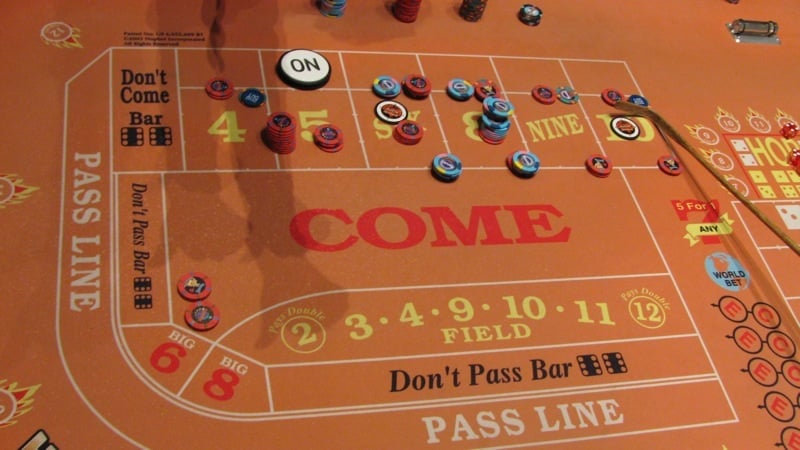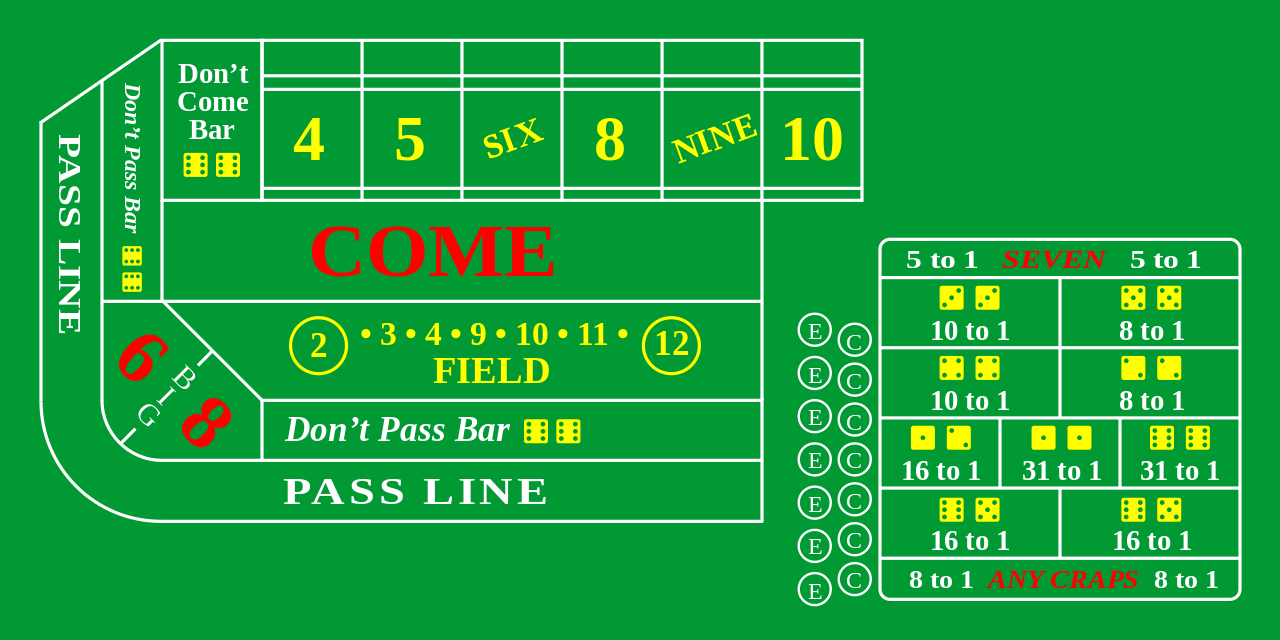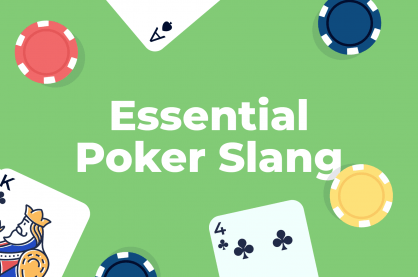The Craps Come Bet Explained: What Is It & How Does It Work?

The come bet in craps is one of the game’s key wagers. Once the point has been established, you’re essentially betting that the next roll will be a 7 or 11. If it is, your Come bet wins. But of course, there’s a little more to it than that. Read on for an easy-to-follow run-through, covering:
- What is the Come bet in craps?
- Where is the Come bet on the table?
- How to make a Come bet
- The Come bet vs the Pass Line bet
- Come bet odds and payouts
- Is the Come bet a good bet?
- Come bet strategy
What Is The Come Bet In Craps?
After the point is established – when the white hockey-puck-like marker is placed on one of the box numbers – you can make a Come bet in craps. This bet wins if the very next roll is a 7 or 11. It will lose if a 2, 3 or 12 is rolled.
If the numbers 4, 5, 6, 8, 9 or 10 are rolled, then the Come bet is moved to that box number. This bet will now win if the number is rolled again before any 7.
The Come bet works in a similar way to the Pass Line bet, and the house edge is about 1.4%.
Where Is The Come Bet On The Table Layout?
The Come bet in craps is made on a large area of the craps table layout, and is marked with the word “Come”. If you look at the photo below, you will see the Come bet area clearly marked in this way.
It is located just below the box numbers 4, 5, 6, 8, 9 and 10, and just above the Field area.

How To Make A Come Bet In Craps
On the New Come Out Roll (the start of a new round of gameplay), the person holding the dice will roll them on the craps table. This person is known as the shooter.
If they roll either a 4, 5, 6, 8, 9 or 10 – which are collectively known as the box numbers – then this number is designated as the point. The dealers will now mark it by placing a hockey-puck-type marker on that number, with the white side up. That’s how everyone knows that this specified number is now the point.
Before the next roll, you can now make a come bet. You do this by placing your wager in the area marked “Come”. You do so in front of where you are standing at the craps table, so the dealer knows that this come bet belongs to you.
- Your bet will now win if a 7 or 11 is rolled on the very next roll.
- Your bet will lose if that roll makes either a 2, 3 or 12.
- If neither of these are rolled, then this can only mean that one of the box numbers was rolled, and therefore your wager is now moved by the dealer to that box number.
- Your Come bet will now win if that number is rolled again before any 7.
- If any 7 is rolled before your Come bet number, then your wager will lose.
Once your Come bet is moved to one of the box numbers, you can make an additional wager on that number. You do this by placing what’s called “Odds” behind that number. It’s similar to placing Free Odds behind your Pass Line wager.
The Come Bet in craps works in a very similar way to your Pass Line wager. The difference is that the Come bet can only be made after the point has been established, and not before. The Pass Line wager can only be made before the Come Out Roll, and not after.
The Come Bet vs Pass Line Explained
A Pass Line bet in craps is a wager which is known as “betting with the shooter.” This means that you are wagering that the shooter will win – meaning that they will establish a point, and then roll that point number again before any 7.
A Come bet in craps works almost in the same way, except that you can only make the Come bet after the point has been established.
So, before the point is established, which is the New Come Out Roll, you can first make your Pass Line bet. Then, after the point has been established, you can make your Come Bet.
Once the point is established, you can place Free Odds behind your Pass Line wager.
But you can also place Free Odds behind your Come bet, once it has been moved to one of the box numbers.
Free Odds on the Come bet in craps work in the same way as Pass Line Free Odds: they are paid at true odds. Or in other words, the house has no edge on Free Odds. This has the effect of reducing the overall house edge on those bets.
The house edge on either the Pass Line bet or the Come bet in craps is about 1.4% without Odds. By placing Free Odds behind your Pass Line Bet or the Come Bet (once on the box number) you can lower the house edge to about 0.85% with Single Odds, and about 0.65% with Double Odds.
Come Bets Odds And Payouts
The base odds on Come bets and Pass Line bets are about 1.4% without Odds, about 0.85% with Single Odds, and about 0.65% with Double Odds.
In some craps casinos you may be able to make Free Odds many times, sometimes even as much as 100x Odds. At 100x Odds, the house edge on that wager reduces all the way down to about 0.02%.
Is The Come Bet A Good Bet In Craps?
Short answer? Yes.
But it depends. Like most things in casino gaming, the outcomes are based on statistical-equivalency models. This means that sometimes the game will be “Hot” (meaning the players will be winning a lot and often), while on other occasions the game will be “Cold” (meaning the players will be losing a lot and often).
So, in the end, the math will even out, and the Odds will equate to the expected payout percentages of the game.
That said, playing the Pass Line with Odds and Come bets with Odds are among the best betting choices in casino craps.
What Is The Best Craps Come Bet Strategy?
So, what is the best strategy for Come bets in craps?
It kind of depends on the game. If you’re in a game where the shooter is hitting a lot of the box numbers, and NOT any 7, then it’s a good strategy to back your other wagers with the occasional Come bet. But remember that the Come bet will lose if a 2, 3 or 12 are rolled, and must be rolled again once moved to one of the box numbers BEFORE any 7.
Make A Hedge Bet
Since the odds say that about 11.2% of the time the Shooter WILL roll either the 2 or 3 or 12 (and therefore you will lose the Come bet), another way to enhance your Come bet strategy is to make what’s called a Hedge bet. Let’s look at an example of a hedge bet with a $5 Come bet and a $1 Prop bet known as “Any Craps”.
- You first place your $5 Come bet wager, and then toss a $1 chip to the Stickman (that’s the dealer with the sick who moves the dice and chips around the table), and yell out “One dollar Any Craps.”
- So your Come bet wins if a 7 or 11 is rolled, but will lose if a 2, 3 or 12 is rolled.
- But now, if the shooter DOES roll either a 2 or 3 or 12, then your $5 Come bet will lose, BUT your Any Craps bet will WIN!
- Since Any Craps is paid at 7:1, that means you’ll be paid a $7 winner for your $1 Any Craps wager. So, in the end, you lost $5 on the Come bet, but you won the $7 wager on Any Craps. This equals a $2 profit.
And that’s why this is called a Hedge Bet – you are “hedging” your loss against a kind of insurance.
But when you do this, you are basically betting against yourself and will eventually wind up losing overall.
That’s because the shooter has about a 11.2% chance of rolling a 2 or 3 or 12 (the “Any Craps”), a 22.2% chance of rolling either a 7 or 11, but about a 66.7% chance of rolling a 4, 5, 6, 8, 9 or 10.
That’s why the Hedge bet in craps is often utilized by players based on their “feel” of how this game is going and how the shooter is rolling. It’s more experience, and not an exact science.
Place Odds Behind Your Come Bet
Another Come bet strategy in craps is to place Odds behind your Come bet once it’s moved to the box number rolled. This essentially backs up your Come bet. Your Odds bet wins if your original bet wins.
In most casinos you will be allowed to make up to a 3x Odds bet when the point is 4 or 10, up to 4x if the point is 5 or 9, and up to 5x if the point is 6 or 8.
As mentioned earlier, doing this lowers the total house edge. This is because while your initial Come bet has a small house edge, the Odds bet behind it has no house edge at all.
Lead image credit: JustAFewThings/Flickr, CC BY-NC-ND 2.0


